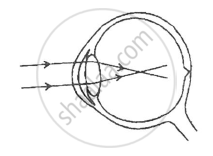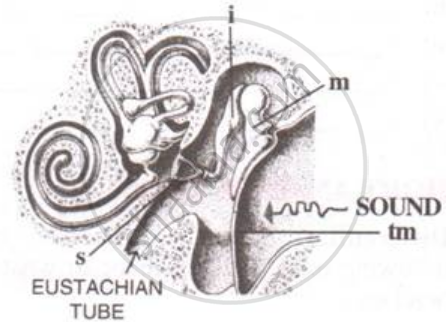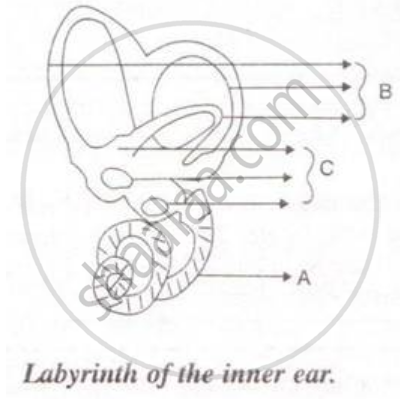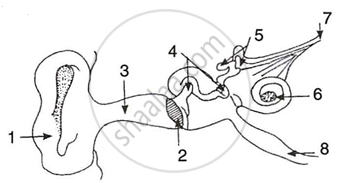Advertisements
Advertisements
Question
Given below is a diagram depicting a defect of the human eye, study the same and then answer the questions that follow:

(i) Name the defect shown in the diagram.
(ii) What are the two possible that cause this defect?
(iii) Name the type of lens used to correct this defect.
(iv) With the help of a diagram show how the defect shown above is rectified using a suitable lens.
Solution
(i) Myopia
(ii) Two possible reasons are
- Eye ball is lengthened from front to back.
- Lens is too curved.
(iii) Concave lens
(iv)
APPEARS IN
RELATED QUESTIONS
The number of oscillations per second of a vibrating object is called its time period.
For human ears, the audible range is 20 Hz to 20,000 Hz.
Deafness is causal due to the rupturing of the Pinna.
find odd one from following: Malleus, iris, Stapes, Incus.
State the main function of the Eustachian tube
fill in the blanks with suitable functions: Ciliary body and __________.
The three parts of human ear contributing in hearing are-
Mention if the following statement is true (T) or false (F) Give reason.
Malleus incus and stapes are collectively called the ear ossicles.
The figure below is the sectional view of a part of the skull showing s sense organ:

Name the sense organ.
Mention the exact location of the following :
Incus
Choose the correct answer.
Labyrinth is a part of ____________
Given below is a diagram of a part of the human ear. Study the same and answer the question that follow:

Name the parts labeled A, B and C in the diagram.
State the functions of the following:
Semi-circular canals
Choose the Odd One Out:
Describe the structure and function of the human ear?
Assertion: Human beings Cannot hear infrasonic sounds.
Reason: Sound with a frequency less than 20 Hz is called infrasonic sound.
Give reason:
Three small bones of ear ossicles are advantageous as compared to one single bone for hearing.
Name the part of the inner ear that is responsible for static balance in human beings.
The figure given below shows the principal parts of a human ear. Study the diagram and answer the following questions.
 |
- Label the parts 1 to 8.
- State the role of parts 6, 7 and 8.
- Why is it harmful to use a sharp object to remove ear wax? Mention the number and name of the part involved.
